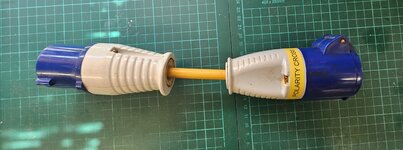- Sep 14, 2021
- 171
- 269
- Funster No
- 84,181
- MH
- Fiat Ducato Camper
- Exp
- 2nd Campervan since 2019
In simple terms, (which a lot of folk do not seem to be able to use, or comprehend), if the polarity is reversed, it means that the negative and positive supply is back to front, so that when an electrical unit is supposedly switched off, there is still a positive supply running to it, so that it is still live.
This, in itself is not a problem, unless, as some have already mentioned, you intend twiddling about in the gubbins within the item in question.
Many supply points on campsites, especially in rural areas of France, are quite liable to provide a reversed polarity, but in itself this is not a problem with many modern motorhomes.
Some modern vehicles are fitted with gubbins which indicates when reverse polarity is encountered
If, however, you are worried about this situation, then purchase a polarity checker, and construct a reverse polarity lead.

Socket Tester
This socket tester is a handy accessory in any electrician's tool kit. Simply plug it into a wall or floor socket and it tells you if the fitting is faulty or not. The tool is also a great gadget to keep at home or in your workshop to determine if a problem lies with your electrical device or...www.toolstation.com
Personally, I always check (force of habit from days of yore) and on the odd occasion where I have come across the lack of an earth, then as an electrical nincompoop, I run on gas and battery until I move on, or I change pitch if possible.
Maybe somebody who is more aware of the electrical black arts than I, can advise on this lack of earth situation.


